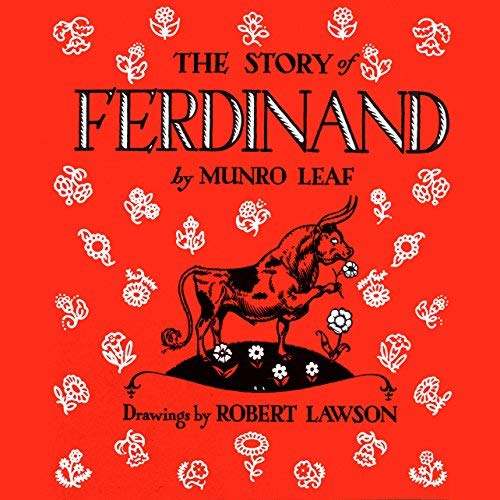Year after year The Story of Ferdinand remains timeless and much loved and we do not cease to be amazed by how this story captures the minds and hearts of children across all our schools. Munro Leaf wrote The Story of Ferdinand in less than an hour one rainy fall afternoon over 80 years ago as a gift to his good friend Lawson. Contending that “dogs, rabbits, mice and goats had all been done a thousand times,” Leaf focused his story on a Spanish bull named Ferdinand who rejects fighting for flower-sniffing, refusing to fight even when forced to face the matador in the ring. Instead, Ferdinand sits down to enjoy the fragrance of the flowers adorning the hair of women spectators. And year after year we observe the responses of children to this story in the same magical way.
Both Adolf Hitler and Francisco Franco banned it. Gandhi and Franklin and Eleanor Roosevelt admired it. The timing of the book’s publication — just months after the start of the Spanish Civil War — proved a timely release, while Hitler called it “degenerate democratic propaganda.” Others, including the Roosevelts, were fans of the book. Anne Carroll Moore, the first president of the New York Public Library’s children’s division, called it an “effortless, happy collaboration . . . designed for sheer entertainment of the ageless.”The legacy of Ferdinand was to extend beyond the Second World War. In 1951 Hemingway offered his own opinion of Ferdinand when he published a short story in Holiday Magazine that begins “One time there was a bull whose name was not Ferdinand and he cared nothing for flowers.”
It is one of those books that both adults and children enjoy and we feel the timing to read it aloud in classrooms widely and with good discussions is right now !
In talking with the team , some elements about the story and the context remind us about why this book works on it’s own. In the best tradition of Picture Books the text is simple and therein lies room for the reader’s imagination and the illustrator’s creative sharing.The masterful black-and-white drawings perfectly complement Leaf’s text, adding energy and humor to the tale. This book has a complete interplay between words and illustrations.
Additionally our children across sites in Goa know about bulls and fights ( both bulls and others !) and so the context of the story excites them immediately. They are aware and some have experienced ‘dhirio’, knowing well enough that they are meant to be ‘banned’ and infact claiming, “ that police watch it too” !!! In conversations about Ferdinand and our reality , the children feel quite strongly that in the act of fighting , there is always hurt and that often there is death and through this story they realise that each of us has the potential for choice like Ferdinand. They delight in his choice of flower smelling over fighting even though the conversations about fights are highly charged.
The Story of Ferdinand, like all good children’s books, extends beyond the context in which it was originally presented. It is, ultimately, a wonderful story with the age old message of being true to oneself. While it has been labelled as propaganda by just about every position on the political spectrum, Leaf saw the book as “propaganda for laughter only”. Across our school libraries we support this text as propaganda for thinking !




